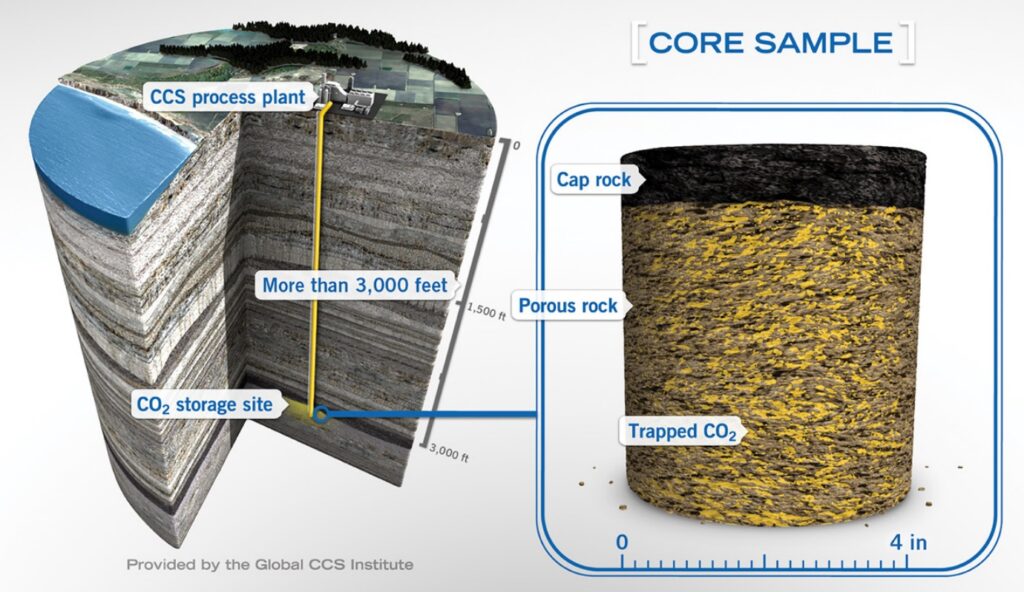What is Carbon Capture & Storage?
Carbon capture and storage (CCS) helps manufacturers, industrial producers and power generators meet environmental requirements in a cost-effective, responsible manner. CCS captures carbon dioxide (CO2) emissions produced by these facilities before they enter the atmosphere. The captured CO2 is liquified, transported and permanently stored deep underground beneath a thick layer of impermeable caprock. The CO2 then naturally mineralizes and dissolves over time.

On-site capture: CO2 is captured at the point of emission, such as cement plants, power plants and other facilities, rather than being released into the atmosphere. CO2 is compressed into a liquid.
Safe transport: Liquified CO2 is transported through a high-strength, carbon-steel pipeline system, which safely delivers the fluid to a secure storage site.
Secure storage: Liquified CO2 is injected deep underground, typically below 10,000 feet, stored in porous rock and sealed beneath a thick layer of impermeable caprock. The CO2 mineralizes over time.
We know that water quality is of critical importance to Hernando County, which is blessed with the Floridan Aquifer. Sequestered CO2 is stored deep underground (3,000 – 12,000 feet), far below the water table, and is sealed in place by thick layers of caprock. Seismic imaging will identify the location of the CO2 in the storage field and deep monitoring will verify that the CO2 is not migrating upward. Shallow groundwater monitoring wells will ensure local drinking water is protected.

Learn About Carbon Capture & Storage
